About Daisen
Daisen is a granary region covered in lush mountains and rice fields situated in the south of Akita. The surrounding mountainous landscape changes dramatically season to season and the area supports a long history of local events, traditions and festivals. Known as Hanabi Town and famous for the annual national fireworks competition, Omagari Hanabi, Daisen boasts a display for every month of the year.
This page features a collection of articles written by current and previous members of the Daisen City Board of Education team, sharing some of their favourite places around town. Hopefully their stories provide some insight into what life is like in rural Northern Japan.
Life in Daisen
Life in Daisen — Ilya Mironov
2023-03-01

When I first received the news that the place I would be going to start my new life was Daisen City in Akita, I immediately went to search for information on the internet as I had never heard of this place and knew nearly nothing about Akita Prefecture except for Akita dogs. After thoroughly reading the Wikipedia article, my next destination was of course Google Images, and one of the first images that I found absolutely blew me away.
After quitting my previous job, I had a blank space of a few months before heading to Japan. This was still during the midst of the Coronavirus Pandemic, and my country was taking strong measures to prevent the spread. This meant no going out if it isn't necessary, prohibition of gatherings, and a strict 8:00 PM curfew where anyone wandering around would be stopped by police and be required to pay a fine unless they had special written permission. I, as well as many others who lost their jobs due to the pandemic or were unable to find employment after graduating from university, were forced to stay at home for the majority of the day. During these strict restrictions, one of the few things that were allowed was going for short walks unaccompanied as long as social distance was maintained between residents. Going on a walk every day became my routine, and one of the only things I could look forward to every day during the distressful times of the pandemic. However, what became an excuse to get outside quickly became a way to reconnect with and gain a new appreciation for nature.

Needless to say, after seeing pictures of Daisen City's scenery, I was very excited to start my new life in a place which seemed like paradise for nature lovers.
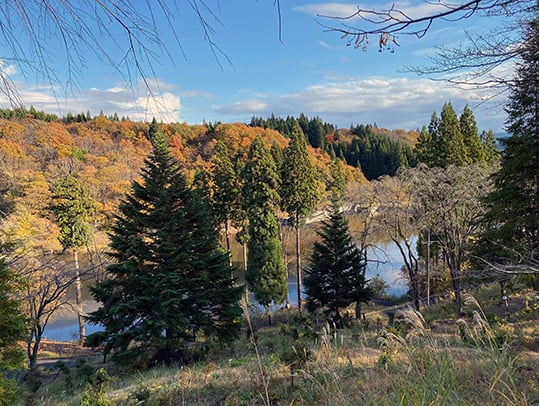
I arrived in the middle of October, a time when some days are in the negatives in my home country, but to my surprise, the weather in Daisen was still suitable for leisurely walks. After finishing moving procedures, my first day off was dedicated to exploring the area in my closest vicinity. I did not have a car yet, but I was recommended Osazawa, a small park within 20 minutes walking distance from my apartment, and it became one of the first places I visited in Daisen City.
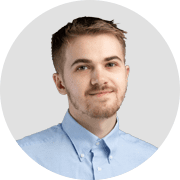
After exploring the area on foot for a few hours, I was able to get a grasp of the surrounding area and was once again reassured that the place I would be starting my new life is ideal for continuing my newfound interest in going on long walks. Not only on the next day off but nearly every weekend and holiday after that, I would spend one or two hours aimlessly walking around the town and still do to this day.
Life in Daisen — Peter Dixon
2022-09-01

Autumn
“Japan has four seasons.”
That’s less a fact than a point of reference. It’s a phrase you’ll hear time and again; just as back in England you’d label the weather ‘alright’. These are more than sayings; they’re a way to ground yourself in a place – the environment and community. Nowhere is this truer than in Japan, where seasonality has been consciously promoted and refined over centuries. But it’s something you can only experience first-hand.
I arrived in Daisen, Akita at the end of November 2021. But I’d spent the last 15 months or so in limbo – the pandemic, of course. Any expectations I’d held were long gone. Lost in the blur of lockdowns, delays and temporary work. One day stands out – a visit to the Japanese Consulate in Edinburgh for my interview to the JET programme. The first question was as predicted, and it still threw me off.
“Why Japan?”
Now I really like Japan, and my life in Daisen has only confirmed that. But I still struggle to say why. It’s not anime or martial arts. In broad strokes, I’ve always loved exploring the many ways people learn to live. And for Japan that’s etched into the landscape - literally in its mountaintop temples and shrines and unique institutions. But these are just aspects of something broader, that hopefully I can tease out a little here.
“Japan has four seasons.”
That’s less a fact than a point of reference. It’s a phrase you’ll hear time and again; just as back in England you’d label the weather ‘alright’. These are more than sayings; they’re a way to ground yourself in a place – the environment and community. Nowhere is this truer than in Japan, where seasonality has been consciously promoted and refined over centuries. But it’s something you can only experience first-hand.
I arrived in Daisen, Akita at the end of November 2021. But I’d spent the last 15 months or so in limbo – the pandemic, of course. Any expectations I’d held were long gone. Lost in the blur of lockdowns, delays and temporary work. One day stands out – a visit to the Japanese Consulate in Edinburgh for my interview to the JET programme. The first question was as predicted, and it still threw me off.
“Why Japan?”
Now I really like Japan, and my life in Daisen has only confirmed that. But I still struggle to say why. It’s not anime or martial arts. In broad strokes, I’ve always loved exploring the many ways people learn to live. And for Japan that’s etched into the landscape - literally in its mountaintop temples and shrines and unique institutions. But these are just aspects of something broader, that hopefully I can tease out a little here.

Coming in to land amongst the ancient mountains and misty cedar forests; I just missed the legendary autumn colours, for which Akita gets its namesake (秋田, autumn rice paddy). But it was striking anyway. Unreal landscapes and exhaustion aside, the first thing that grabbed me was the friendship and support offered by the people who call Daisen home – my new co-workers were lifesavers, but also strangers I’d run into in a shop or by the night market, who’ve since become close friends through mutual love of Ghibli movies.

One thing everyone warned me about was the brutal Tohoku winters. So, after all the hype it was a little disbelieving to find out my home back in the UK got its first dusting of snow well before Akita. A few weeks here and I was beginning to feel settled, comfortable, but that’s not really what Japan is about..
Winter
Mid December and winter comes crashing in. And it won’t relent for 3 months. It’s not exceptionally cold, but Akita gets some of the most snowfall in the world. Surreal doesn’t begin to describe seeing entire country homes - on the wrong side of a snow drift - swallowed by the powder. It’s strangely beautiful, as from a distance the villages begin to resemble little arctic outposts, stung together by telephone lines. But it’s more than idyllic wintery landscapes - the climate demands your attention and necessitates new attitudes to life. You live and die by the kerosene heater (ask your grandparents); your time is measured in elopes between heat sources. Rooms must be sacrificed to preserve the warmth. And many roads cease to exist, despite what Google Maps would have you believe.
Winter
Mid December and winter comes crashing in. And it won’t relent for 3 months. It’s not exceptionally cold, but Akita gets some of the most snowfall in the world. Surreal doesn’t begin to describe seeing entire country homes - on the wrong side of a snow drift - swallowed by the powder. It’s strangely beautiful, as from a distance the villages begin to resemble little arctic outposts, stung together by telephone lines. But it’s more than idyllic wintery landscapes - the climate demands your attention and necessitates new attitudes to life. You live and die by the kerosene heater (ask your grandparents); your time is measured in elopes between heat sources. Rooms must be sacrificed to preserve the warmth. And many roads cease to exist, despite what Google Maps would have you believe.
Winter is clearing a foot of snow off your car roof for the second time that day; so you can creep through the storm to the familiar neon signs of the petrol station; in order to fill your jerry cans with that all important kerosene. And then doing it again sooner than you’d like.
But winter is also new opportunities: it’s fragile snow lanterns and bracing festivals, local delicacies like kiritanpo and iburigakko round firepits, it’s stunning onsens and learning to snowboard. Back home winter sports were something exotic and niche – picture the well-off on retreat in the Swiss alps. Here it’s a struggle not to get shown up by my elementary students. Daisen is a paradise for skiers, snowboarders and - so I’m told - snowshoe hikers. That’s on the bucket list for next winter! Mt. Ohdai is a local favourite – easily accessible, affordable, and with a range of slopes suited to different abilities. Actually, every ski field is pretty affordable – it’s a way of life here rather than an elite novelty.
But winter is also new opportunities: it’s fragile snow lanterns and bracing festivals, local delicacies like kiritanpo and iburigakko round firepits, it’s stunning onsens and learning to snowboard. Back home winter sports were something exotic and niche – picture the well-off on retreat in the Swiss alps. Here it’s a struggle not to get shown up by my elementary students. Daisen is a paradise for skiers, snowboarders and - so I’m told - snowshoe hikers. That’s on the bucket list for next winter! Mt. Ohdai is a local favourite – easily accessible, affordable, and with a range of slopes suited to different abilities. Actually, every ski field is pretty affordable – it’s a way of life here rather than an elite novelty.
Naraoka Pottery in Nangai village is well worth a visit when the cold gets too much – especially when their enormous three-story kiln is fired. It’s based on designs from medieval China, which, combined with a unique sea cucumber glazing method and the specific impurities of the rugged Akita clay, produce brilliant blue pottery in the wabi sabi tradition. Alternatively, you can warm yourself by sampling the many excellent sake varieties here – a byproduct of those abundant rice harvests you can’t help but take pride in. Hideyoshi Brewery offers English language tours on a historic site that dates back to the Edo period. Also really good sake. I think more than any other season the winters in Akita teach you to inhabit your space and time, to adapt and grow and embrace change.



Spring
When the Yamato court established a fort at Hotta (The ruins are well worth a visit), they were seeking to pacify a wild frontier. They must have failed, because Akita is still largely a stunning expanse of untamed wilderness, checked by innumerable mountains. A place where the human and the animal, the folk and the quintessentially Japanese, the supernatural and the mundane intersect.
I’d never experienced true wilderness - not a place a where the mountains are ever-present on the horizon, the evergreens sprawl indefinitely and where bears factor into your hiking preparation. It’s a far cry from the windswept hedgerows and craggy foothills of northern England – though I’m sure I’ll leave Akita with a newfound appreciation for both.
When the Yamato court established a fort at Hotta (The ruins are well worth a visit), they were seeking to pacify a wild frontier. They must have failed, because Akita is still largely a stunning expanse of untamed wilderness, checked by innumerable mountains. A place where the human and the animal, the folk and the quintessentially Japanese, the supernatural and the mundane intersect.
I’d never experienced true wilderness - not a place a where the mountains are ever-present on the horizon, the evergreens sprawl indefinitely and where bears factor into your hiking preparation. It’s a far cry from the windswept hedgerows and craggy foothills of northern England – though I’m sure I’ll leave Akita with a newfound appreciation for both.
Akitans are likewise hardy and spirited, and have offered me nothing but kindness and generosity (and foraged vegetables!) in navigating life here and the long winter.
“Sambui na!”
That’s Akita-ben for ‘it’s cold!’. Useful. And it was the first phrase of the regional dialect I was taught. Some of the older generation speak only Akita-ben, indeed I take (Tokyo standard) Japanese class with an Akitan local! But I’ve yet to face a language barrier that couldn’t be overcome with gestures and the incredible hospitality of the people who call Daisen home.
Because of the emphasis on community and supporting local business, a thriving market scene and food culture has developed. I’ve had more delicious meals here than I can recall, but two standouts are Takanashi Store and Café Lopo. Takanashi is a farmhouse turned restaurant and a cornerstone of the market circuit – hosting and appearing everywhere in a cosy van that guards the nicest bento you’ve ever had. They specialise in local favourite ‘Firework Chicken’ – something between chicken kebab and biryani but fresher and more flavourful than both.
Lopo is a smart little café owned by a Slovakian resident, where you can try an authentic Slovak beef stew, along with no less exceptional café mainstays like paninis and matcha lattes. Both these stores sell fresh farm produce too. You’ll want to follow Daisen businesses on Instagram to stay up to date - naturally the menus evolve and follow the seasons.
“Sambui na!”
That’s Akita-ben for ‘it’s cold!’. Useful. And it was the first phrase of the regional dialect I was taught. Some of the older generation speak only Akita-ben, indeed I take (Tokyo standard) Japanese class with an Akitan local! But I’ve yet to face a language barrier that couldn’t be overcome with gestures and the incredible hospitality of the people who call Daisen home.
Because of the emphasis on community and supporting local business, a thriving market scene and food culture has developed. I’ve had more delicious meals here than I can recall, but two standouts are Takanashi Store and Café Lopo. Takanashi is a farmhouse turned restaurant and a cornerstone of the market circuit – hosting and appearing everywhere in a cosy van that guards the nicest bento you’ve ever had. They specialise in local favourite ‘Firework Chicken’ – something between chicken kebab and biryani but fresher and more flavourful than both.
Lopo is a smart little café owned by a Slovakian resident, where you can try an authentic Slovak beef stew, along with no less exceptional café mainstays like paninis and matcha lattes. Both these stores sell fresh farm produce too. You’ll want to follow Daisen businesses on Instagram to stay up to date - naturally the menus evolve and follow the seasons.
Back to the land - it goes without saying that Daisen boasts exceptional trails in pretty much all directions, suitable for beginners and experienced hikers. But I’ll resign myself to shout out just Himegami Park, on the western bank of the Omono river, overlooking the town of Omagari. There’s a bunch of easily accessible, but less travelled paths round the park; and a beautiful mountaintop shrine that’s only slightly overshadowed by the spectacular view of the town below.
In the park proper - which is accessible by car – you’ll find a lookout point. Here, on a chilly April night, my impressions of Akita converged and manifested. Looking across the Daisen plain, myself, my friends and a hundred or so townsfolk camped out to watch the spring fireworks light up the sky. Centuries of traditional craft honed into two hours of spectacular arrays. In a fraction of a second the light would search out from above the river, up along the treelines and illuminate our ancient perch. The sound would soon follow – more bellowing thunder or canon fire than anything that resembled modern commercial fireworks. It was the intersection of nature, culture and the living human that makes life in Japan so appealing.
Summer
As of writing, the rainy season is making its great and terrible entrance (The faithful know Japan actually has five or six seasons). And I’m taking great pleasure in the soft grey light that fills every cafe, the sounds of the rain chimes that adorn the shrines and temples here, the small dramas of the frogs that my elementary students like to catch and show me. And I especially love the dead silence, the gentle breeze when the humidity breaks for a moment and there’s space for reflection.
In a few weeks, this too will give way to summer proper. Roll on camping by the river and the famous Omagari summer fireworks festival. And no doubt the heat will bring its own challenges – anyone with my background knows that above 15 degrees centigrade is t shirt weather!
Summer
As of writing, the rainy season is making its great and terrible entrance (The faithful know Japan actually has five or six seasons). And I’m taking great pleasure in the soft grey light that fills every cafe, the sounds of the rain chimes that adorn the shrines and temples here, the small dramas of the frogs that my elementary students like to catch and show me. And I especially love the dead silence, the gentle breeze when the humidity breaks for a moment and there’s space for reflection.
In a few weeks, this too will give way to summer proper. Roll on camping by the river and the famous Omagari summer fireworks festival. And no doubt the heat will bring its own challenges – anyone with my background knows that above 15 degrees centigrade is t shirt weather!

Ultimately, when people ask me why I came to Japan I really can’t answer – not in a sentence anyway. But life here has a rhythm that I’ve come to love, built around respect and appreciation for temporality and impermanence. It matters that Japan has four seasons - it’s woven into the culture. That’s not (quite) so obvious in the bustling cities like Tokyo and Osaka, but in Daisen it’s everything. Its shaped me too – I’m more resilient and open, and I’ll continue to be grateful for my time here. I’d recommend a visit to Daisen to anyone interested in approaching life from another perspective. Here’s to many more festivals, new experiences and changing winds!
Life in Daisen — Natasha Green
2022-03-01
They say, “time flies when you’re having fun,” and while I’ve only been here for a short time, the days are passing in the blink of an eye. Before my arrival to Japan, I waited over a year to finally come to Daisen due to the pandemic. All that waiting was spent researching and daydreaming about what this city would be like. I was already living in a small town so I wondered how different Daisen would really be. However, after spending my whole life surrounded by flat land and cornfields, I was overjoyed to be living in a place with huge mountains and rivers. I never tire of looking at them and I regularly walk to the Maruko River despite the snow, just to get a better view.
Walking around town has been my favorite way to learn about what this city has to offer. Two weeks after I arrived, I wandered over to Himegami Park, and was shocked by the lovely view. There was a peaceful atmosphere with few people out that day. As I walked along the path, I was intrigued by the shrine tucked away in the trees and wondered if I could find more.
Turns out, there are many around Daisen, including one right down the street from my favorite dessert shop Patisserie Deux.

They make baked goods like assorted cookies, lemon cake, and a delicious chocolate brownie, which I enjoyed on my first birthday here. It’s no secret I love sweets. In fact, all my coworkers know this and fatten me up by leaving both traditional and popular Japanese snacks on my desk almost every morning. It’s a welcoming gesture and I can burn off the calories the next time I go snowboarding.
The sun was shining over miles of untouched snow in the distance. I have seen snow in my hometown too, but the light dusting we get in Ohio is nothing compared to the several feet Daisen has received this year.
I also love how the snowfall makes a lovely backdrop for fireworks. In America, fireworks are saved for major holidays like the 4th of July and New Year’s Day. So, it was a pleasant surprise to have dinner and a show on an ordinary, snowy Wednesday from the comfort of my home.
I’ve had many new experiences this winter, but I’m happy I get to participate in an old hobby too. After years of being unable to dance, I never thought I’d get the chance to do ballet again.
The classes at Peare are very fun and provide a good challenge too. It works both my body and mind since they are taught in Japanese. This gives me a chance to improve my language skills, which will be useful the next time I chat with the employees at my favorite cafe, Espresso 1oz.

The dim lights, warm heaters, and scent of fresh brewed coffee create the coziest ambiance. There’s no better place to enjoy a slice of baked cheesecake, an iced latte and friendly conversation. As far as first impressions go, I think the inviting atmosphere there is reflective of Daisen as a whole. I look forward to finding even more things to do this spring!



